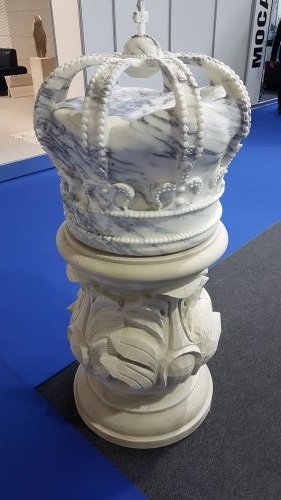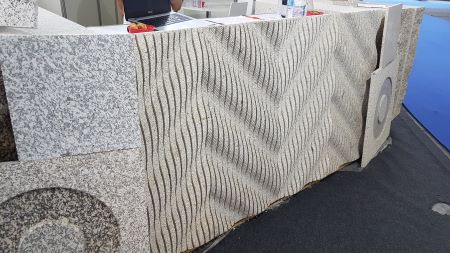
1.- Major investments are taking place in the stone industry in the form of machinery both in the quarries and in the processing units. Most of the investments are in the limestone quarries located in the centre of the country and in the granite industry in the north of the country. The marble industry located in the south of Portugal, famous for Rosa Portuguese is, however, struggling.
2.- Portuguese companies are very competitive in making kerbstones used in public works all over Europe, and are, by far, the biggest suppliers of stone for this kind of projects. This is one area of major machinery investments and one of the main reasons for the bouyancy of the local granite industry.

3.- The financial crisis a decade ago affected the local construction industry in a very big way as it did almost all countries, and the result was the local market remained negligible for almost a decade. But the Portuguese economy has recovered smartly now and there is more construction activity in the local market. The booming tourism industry in Portugal has led to many hotels being built all over the country, especially in Lisbon.
4.- The limestones found in the centre of the country, in white/grey, with Crema Moca being especially popular all over the world, means companies working with these materials are enjoying good demand.

5.- Unlike Spanish companies which focused more on industrial scale production of their materials, the Portuguese emphasis has been more on cut to size and projects, and the companies are relatively smaller in size. By focusing on projects they have thus acquired a wider range of skills. This knowhow has helped them to emerge stronger. It also explains why Portuguese stone companies are doing relatively better than those in neighbouring Spain. As Mr Humberto Caneira of Granitrans puts it: "In Portugal natural stone is lived in a different way, with feelings. In Spain, natural stone is seen as an industry, conceived mainly in terms of production capacity".

6.- Relatively lower labour costs, availability of materials that are currently in fashion (predominantly grey granites in north, limestone in centre), greater number of public sector projects in western and central Europe, all these factors have become positive motors for current growth of the natural stone industry in Portugal.
7.- There is currently huge export of grey blocks from Portugal to Poland (the subsidies from Brussels for purchasing multiwire machines in Poland is surely a big incentive for this aspect of the business); in fact, there is a shortage of blocks of grey granites in the market.

8.- For all the positive momentum currently in the stone industry, the risks for Portugal are similar to that in other countries. There is need for more innovation - in textures and designs and developing new applications. There seems to be more innovation in Portugal than in Spain, observing the different stone companies exhibiting in the Stone fair in Batalha in June one got the impression the Portuguese have been making greater effort in experimenting with new finishes and textures. But they need to do much more. The general image of Portugal remains that of being cheaper in price- an image which Portuguese businessmen would surely find unsatisfactory compared to their ambitions.
Our acknowledgments to Felipe Longarito and Humberto Caneira for their comments and the information provided.
